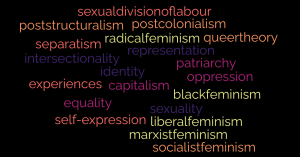1
Section One: The Fundamentals
A) Common assumptions we make about sport and society
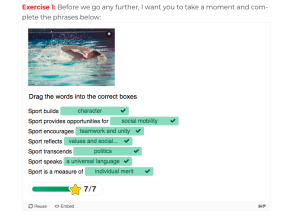
“Sports Build Character”In ways, I believe engaging in sports does build character. Playing in sports can help individuals develop collaborative and teamwork skills, social skills, friendships, and can help individuals (especially children) experience both success and failure in sport. I believe there are also many benefits to being on a close-knit sports team. Being surrounded by your teammates frequently helps foster friendships and connect with others who share similar interests. Looking at a different perspective, many people do not have the opportunities to play in sports, which shows how sports can help contribute to character, but is not the only thing that builds it. This can be related to the metanarrative of capitalism as many low-economic status individuals and families may not be able to participate or have the funds to participate in sports, which means they have built character from other experiences in their life. I believe personal experience in someone’s lifetime is the factor that builds character and participating in sports is one of the many experiences some may face. Individuals experience a wide range of challenges, struggles, and achievements throughout their lifetime that helps contribute to who they are as a person.Overall, engaging in sports can be very beneficial to an individual and help build their character, but other personal experiences during someone’s lifetime can have a bigger impact. Something that stuck out to me when reading my peers contributions was their input on how sometimes team building can take a turn when teams decide to participate in hazing rituals. Most of the time these can be negative and promote harmful behaviour and does the opposite of team building. Reading these contributions helped me look at this prompt in a different light, and made me remember the harmful actions that sometimes team’s may participate in. |
Exercise 3:
What are some other metanarratives about sport that you are familiar with? Find an image or video clip or draw something yourself that captures this idea…
The metanarratives presented in module one highlight very meaningful and truthful representations when it comes to people’s meaning of sport and the influence on society it brings. Another metanarrative that I can think of would be the importance of health and wellness that is associated with participating in sports. It is no doubt that engaging in any type of physical activity regularly helps people in multiple aspects when it comes to their physical and mental health. People take part in watching and participating in sports for multiple reasons, and one might be to influence their own health by participating in healthy activities such as playing in sports. Famous athletes might also promote wellness and health in the media and their social platforms, which can help create the metanarrative of health and wellness that is associated with playing sports to be active. Another metanarrative associated with sports would be personal identity. Engaging in sports can help people understand how they perceive themselves and how others perceive them when it comes to their involvement in sports.I believe that these metanarratives can matter to a certain extent because it some cases they can lead to and have a negative affect on individual’s ideas of what sport is and should be like in society. On the contrast, positive metanarratives surrounding sport such as health and wellness is important as it can have a positive influence on society and encourage those to participate in sports.
|
B) What is social justice?
Exercise 4:
Think back to the last section and try to look at some of the ideas we discussed differently. How might sport and social justice actually co-exist?
Engaging in sports and physical activity in general promotes healthy development and wellbeing in individuals and children. Playing in sports can help people feel socially connected and promote confidence and teamwork skills. When people don’t engage in physical activity, it can have serious complications on their health and development, as well as contributing to mental health struggles. In regard to sport and social justice, many individuals and children don’t have the opportunities to engage in sports and be involved in sports teams. Some individuals may have little opportunity to engage in sports due to things such as culture, financial restrictions, limited access, and much more. Looking at a different perspective, negative discourse in the sport world surrounding things such as gender, race, ability, and more, can severely impact an individual and their mental health and well-being. Social justice plays a role in these scenarios because these negative representations and experiences encountered by individuals in the sport industry spark attention to changes that need to occur and conversations that need to happen in order for everyone to have equal and fair opportunities.
Additionally, the link between sport and social justice can be seen when professional athletes use their platform to advocate and speak out on social justice issues. For example, professional athlete Serena Williams has used her platform on social media multiple times to promote gender equality and women’s rights.
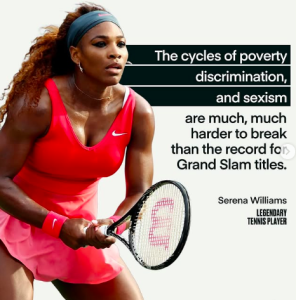
C) Social Justice Reading
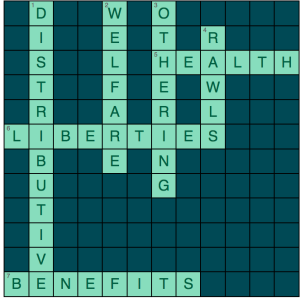
D) KINESIOLOGY AND SOCIAL JUSTICE
Exercise 5:
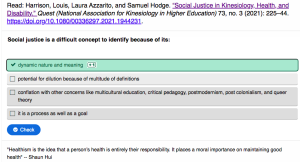



Exercise 6:
What are the implications of bodies-at-risk discourse and the refusal to understand the health gap from a social justice perspective, according to the authors of this article?
The authors of this article highlight the negative implications of bodies-at-risk discourse in society. These authors state how this discourse creates a framework that marginalized groups such as people with low income backgrounds, disabilities, and minoritized individuals, are an issue in society (Harrison et al., 2021). This discourse further perpetuates ableist, sexist and racist views and is harmful to those who are affected by it. This article shows how bodies-at-risk discourse fails to take systemic and structural barriers into account when understanding what can contribute to health disparities found in these groups (Harrison et al., 2021). Things such as low-income, institutional racism, and lack of access to recourses, can have a significant impact on an individual’s health and their life.The authors of this article highlight the need to move beyond these views and take social justice matters into consideration, by trying to understand the root of health disparities. The refusal to understand the health gap from a social justice perspective is shown by these authors in this article by explaining how the research involvement in school settings surrounding marginalized groups perpetuates racial inferiority (Harrison et al., 2021). This research targets its focus on marginalized groups underperformance in multiple domains and the harmful effects it brings as it lacks awareness to the influence of systemic barriers (Harrison et al., 2021).Harrison, L., Azzarito, L., & Hodge, S. (2021). Social justice in kinesiology, health, and disability. Quest, 73(3), 225–244. https://doi.org/10.1080/00336297.2021.1944231 |
Section Two: Sport Feminism
Exercise 7:
What is feminism? What does it mean to you? Choose one of the images below and explain how it captures your understanding of feminism (or find one that does speak to you and paste this into your pressbook with an explanation of why it matters to you.
Feminism is about gender equality, equal opportunities for everyone, and aiming to end sexism. Feminism is very important to me in life. I believe I am a true feminist and stand for equality for everyone while understanding that individuals, particularly women, go through unique experiences and challenges in many aspects throughout their lifetime. The picture that really sticks out to me is the man with the shirt saying, ‘this is what a feminist looks like’. No matter how hard someone around me tries to explain what feminism is, some people I have known in my life (particularly men) think that feminism is about ‘females who hate men’ and ‘crazy females who only care about women’. I have had multiple experiences where the men I talk to have a truly distorted definition and view of what feminism is, while also thinking they can’t be considered a feminist because they are a male (not saying this is every male whatsoever, this is just my personal experience). Seeing this picture makes me feel heard, appreciated, and hopeful. It shows a different representation of feminism in a world where some have created false narratives of what it truly is. I think this image is very powerful and important to be seen.Something that stood out to me when reading the social feminism section in the reading Gender, Feminist Theory, and Sport was Messner (1992) and Messner and Sabo’s (1990) work. These researchers highlight how men enjoy certain advantages they receive in sport due to their gender, the prices they sometimes face due to their gender, and the difficulties they can go through too based off their gender (Scraton & Flintoff, 2013). I thought that this encompassed what feminism (especially in relation to sports) is like, showing the disadvantages between men and women in sport and the privileges men have, while also showing how men can face the price of sexism too if they don’t fall into traditional masculine norms. This relates to what I was mentioning above because many people may have a negative and untrue view of what feminism is like and doesn’t believe it considers male struggles in society. Overall, to me, feminism is very important as it recognizes that females have unequal opportunities in society based off their gender and fights for equal gender rights for everyone.Scraton, S., & Flintoff, A. (2013). Gender, feminist theory, and sport. A Companion to Sport, 96–111. https://doi.org/10.1002/9781118325261.ch5 |
Exercise 8:
Radical Feminism: Radical feminism emphasizes how patriarchy contributes to systemic issues that oppress women and focuses on achieving gender equality by aiming to destroy patriarchal structures. In the context of sports, radical feminism highlights how situations in sports can reinforce gender norms and traditional roles.
Marxist Feminism: Marxist feminism highlights how capitalism contributes to the challenges that form from gender inequality. In the context of sports, this feminism recognizes that economic barriers limit access to equal resources and opportunities for female athletes.
Liberal Feminism: Liberal feminism focuses on gender equality using political framework and aims to achieve equal opportunities for everyone. In the context of sports, liberal feminists advocate for female athletes in the sports world and aim to push policies in sport that includes equal opportunities for all genders.
Black Feminism: Black feminism addresses and emphasizes the unique experiences and challenges faced by black women in society and highlights the concept of ‘intersectionality’ and its impact on marginalized groups. In the context of sports, black feminism highlights the intersectionality between race and gender and how it influences the stereotypes and discourse that these athletes can face.
Scraton, S., & Flintoff, A. (2013). Gender, feminist theory, and sport. A Companion to Sport, 96–111. https://doi.org/10.1002/9781118325261.ch5
Exercise 9: Crossword Activity
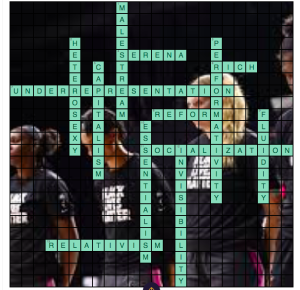 Exercise 10:
Exercise 10:
